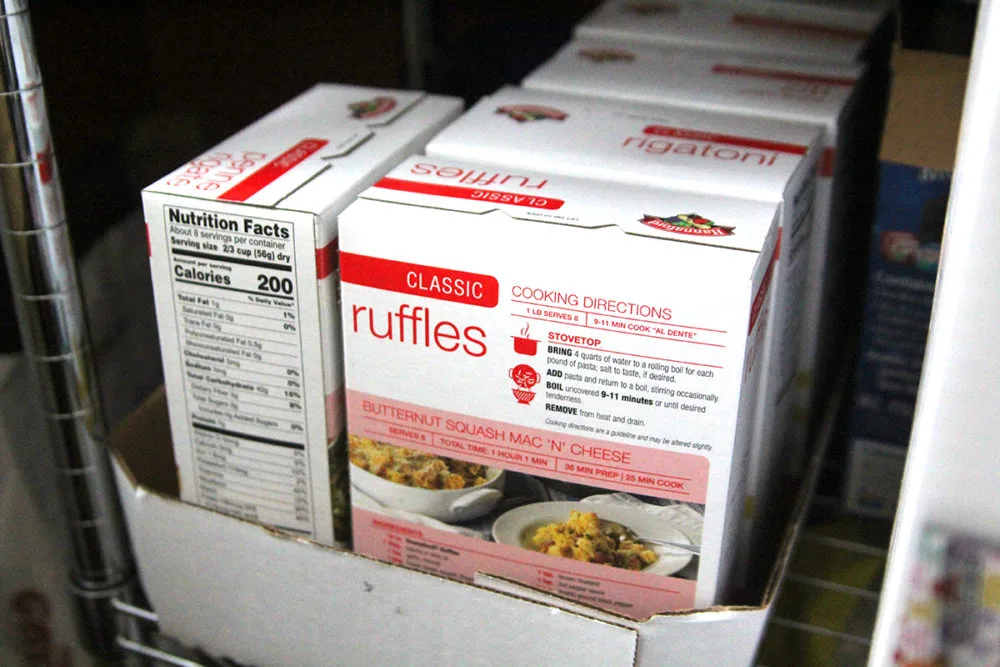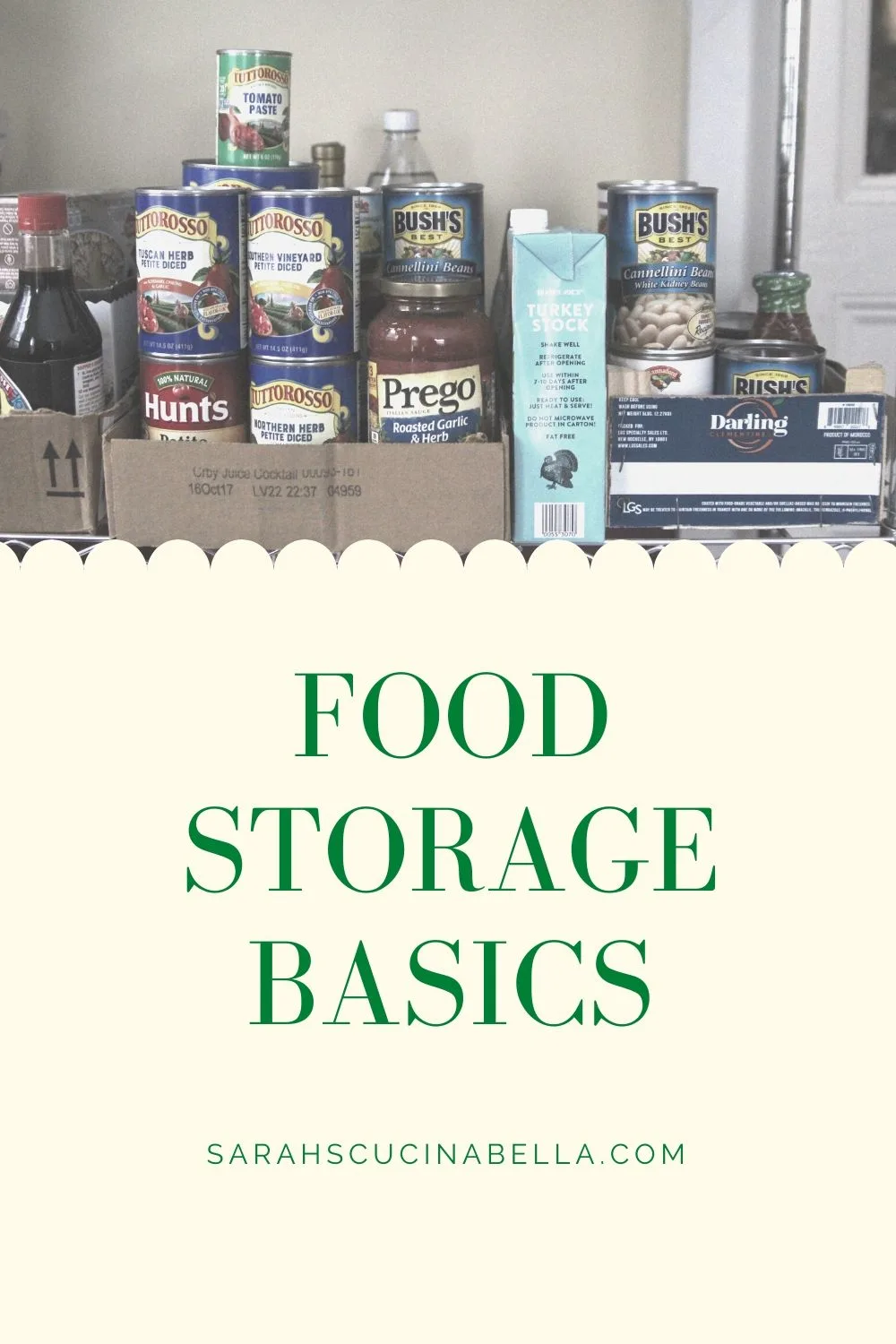Keeping a stocked pantry goes a long way in difficult times. These food storage basics will help you get started.

What do you do if you can’t (or don’t dare) go to the store or even leave the house? How do you keep yourself and your family fed?
Those aren’t questions we think about often. But maybe they should be. A well-stocked pantry has benefits on the everyday level, but also means that disruptions to life don’t make day-to-day living a challenge.
When I think back to Hurricane Irene in 2011 and Hurricane Sandy in 2012, both of which knocked out our power for days, I remember the worry about how I would feed my kids. Irene happened during summertime, so I was able to shift some cooking to the outdoors. But Sandy was followed by a blizzard.
After experiencing that twice, I learned that keeping your kitchen stocked with nonperishables can help allay those fears — and make a challenging situation less stressful.
These food storage basics will help you get started.
Start Small
If you aren’t already storing food, don’t panic. Unless you know with considerable certainty that a disaster is imminent, there’s no need to run to the grocery store and stock up on a jumbled up cart full of canned and dried goods.
Instead, smart small and be deliberate.
There are some staples I always stock up on when they are on sale or otherwise inexpensive: Pasta, canned tomatoes, marinara sauce, cereal, peanut butter and jelly. I also keep beans on hand, which are a great, shelf-stable protein. From these ingredients, I can make a variety of meals.
If you are just getting started, another tactic to take is purely meal-based. Write down a few meals that can be made with shelf-stable food items. This could include spaghetti, chili, soup or perhaps even a casserole made with canned vegetables and pasta.
Buy enough ingredients to make the dishes you identified a few (perhaps three or four) times. Think up other meal ideas and do the same on subsequent shopping trips, alternating with other ready-to-eat staples like granola bars. Over the course of a few weeks, you’ll gather enough food to keep your family fed — with variety — for a few weeks.

Eat What You Store, Store What You Eat
Waste is always a concern for me, and that’s especially true when it comes to food storage. It’s easy to stock the pantry, but less easy to ensure that your stocking up isn’t wasteful.
All of this is to say that you should only be storing foods that you know your family will eat. I, for instance, don’t keep many canned vegetables because they aren’t something we’ll eat. But canned, jarred and otherwise shelf-stable fruits are always on hand.
There’s no sense in keeping foods that no one enjoys.
First In, First Out
An important tenement of food storage basics is to ensure that the food rotates — getting eaten and replaced regularly.
Just like in a restaurant or grocery store the first foods that go into your food storage system should be the first ones that come out.
As a result, anything in our pantry is fair game for eating. So that pasta I keep stocked? We eat some and replace it later. The same goes for the tomatoes, cereal, peanut butter and other items. We’re constantly eating and replacing foods.
By rotating your food storage you don’t have to worry about anything going bad. While most of your food storage items will last for a good long while, but you don’t want to find yourself with 10-year-old cans of green beans because you forgot to rotate your stock.
What Types of Foods Can Be Stored?
Nonperishables are your best bet. They have a longer shelf-life, are versatile and can be used in many ways. That includes canned goods (both commercially prepared and home-canned), dried foods, freeze-dried foods and dehydrated foods. Some frozen foods can also be stored, though their shelf life is shorter.
Ideally, you will eventually have a variety of stored foods to comprise a balanced diet. Keep them in a cool, dry place.
What are the Best Foods to Store?
The best foods to store are the ones your family will eat. This chart shares some info about commonly stored foods and what to use them for.
As your food storage system evolves, you can make it a little more sophisticated, if desired.
| Food | How to use it |
| Dried pasta | These can be used as part of a meal or as a main dish. |
| Rice | Can be used in casseroles or soups, as a side dish or as a way to stretch a meal further. Note: Brown rice is healthier for you than white rice, but it does not store for nearly as long as white rice. |
| Canned vegetables | Can be used to make casseroles, soups, stews, chili’s or as a side dish to a meal. Canned tomatoes are good for sauces, as a base for chili and more. |
| Canned proteins | Canned proteins like chicken, tuna, clams and ham can be used to make soups, stews, or casseroles when added to some canned vegetables, and will provide necessary protein. |
| Canned fruit | Again this is based on your family’s preferences but canned fruit can make for a welcome change and a sweet treat at the end of a meal, or served alongside oatmeal for breakfast. |
| Spices + herbs | Make sure to store whatever spices and herbs you use regularly such as garlic powder, onion powder, chili powder, paprika, dried basil, dried thyme, dried rosemary and dry mustard. Spices and herbs are an excellent way to give some of the same foods a different flavor to prevent boredom. |
| Powdered milk | So many different recipes that you might normally make probably call for milk. You can’t store a gallon of milk forever, and what happens if you can’t run to the store? Your best alternative is powdered milk. You can cook with it, or add it to cereal just like regular milk once it has been reconstituted. |
| Baking staples | Having baking staples on hand means that you can make a loaf of bread, a pan of brownies, or pancakes. Even if you end up living off of your food storage you still want a treat from time to time right? Items like flour, sugar, salt, baking soda, baking powder, cocoa powder and cooking oil are good to have on hand. If you use them, yeast and cooking oil spray are also worthwhile. |
One Thing Not to Forget
Drinks! After the hurricanes in 2011 and 2012, I started keeping bottled water on hand in case of an emergency. At the time, we had a well so prolonged power outages meant prolonged time without running water.
These days, we are on city water so we don’t lose running water when the power goes out. Still, it’s smart to keep a couple gallons of water and other beverages on hand for emergencies. You never know when you might need it. In addition to water, I like to see electrolyte drinks stored — they are great when replenishing fluids after illness too.

Having a food storage system in place can give you great peace of mind. Use these food storage basics to get your food storage plan started today.

Kate
Friday 28th of February 2020
We always keep some "blackout" foods available, which strikes me as funny since I've been in California long enough now that I should probably refer to them as "earthquake" foods.... and yet we've only resorted to using them by need in a blackout and not an earthquake.